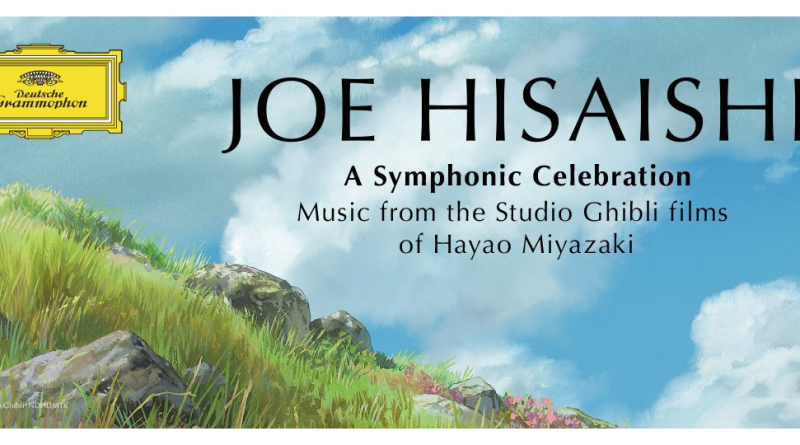Joe Hisaishi – A Symphonic Celebration – Review
| Album Title: | A Symphonic Celebration – Music From The Studio Ghibli Films Of Hayao Miyazaki |
|---|---|
| Anime Title: | Various Studio Ghibli Films |
| Artist: | Joe Hisaishi, Royal Philharmonic Orchestra |
| Catalog Number: | UMCK-7191 |
| Release Type: | Arrangement |
| Release Date: | June 30, 2023 |
| Purchase at: | Amazon, CDJapan, Spotify, Apple Music |
Joe Hisaishi’s A Symphonic Celebration Album Review
Joe Hisaishi’s debut on Deutsche Grammophon, A Symphonic Celebration, sees him paired with the Royal Philharmonic Orchestra of London to showcase 10 arrangements (12 if you count the bonus disc) to 10 of his Ghibli film scores. The arrangements themselves span the gamut of intricate symphonic suites and melodic medleys and all of them are a delight.
But here’s the rub: I’ve heard plenty of Ghibli orchestral albums, and this one doesn’t bring a whole lot to the table. The pieces are enjoyable, but if I wanted to listen to Hisaishi’s works presented as a symphonic suite, I’d listen or watch him conduct the New Japan Philharmonic World Dream Orchestra at the Budokan. If I wanted good ol’ symphonic Ghibli arrangements, I’d listen to the Czech Philharmonic Ghibli album. Or get the two Essential Joe Hisaishi volumes for a good representation of Hisaishi’s oeuvre.
Regardless of where you are in your Hisaishi/Ghibli fandom, this album is solid. You’ll get all of the classics. Where the quality differs lies in how cohesive the arrangements are. Nausicaa’s suite’s individual parts are solid. Its introduction is stirring in the flurry of drums and brass, before yielding to a sublime piano melody befitting that of an epic journey. The transition to the requiem feels sudden, but it effectively channels the grimness. Likewise, the transition to the battle theme isn’t smooth, but its melody is dynamic and engaging with the frenetic woodwinds atop a rushing rhythm.
Similarly, My Neighbor Totoro’s suite has issues going from one theme to the next. You can’t go wrong with the enchanting theme from “Path of the Wind”, with its stately aura and mystical tones. But when the piece moves to the chorus singing the jaunty “Hey Let’s Go” opener and the fun Totoro ending theme, there’s an emotional mismatch. While you can’t fault the individual sections, I do wish they handled the transitions better.
Where this album shines is in the thematically cohesive pieces. Kiki’s Delivery Service, with its iconic motif, effortlessly goes from “A Town With an Ocean View”, where the strings swell with optimism and a touch of nervousness, to the more somber and introspective “Heartbroken Kiki”, and ends with the heartfelt “Mother’s Broom”. The same can be said for Ponyo, where the entrancing Deep Sea Pastures lead to the graceful and serene vocals in “Mother Sea”, before closing out with the effusive Ponyo ending theme.
As good as these performances are, if you’ve been listening to Ghibli arrangements, it’s likely you’ve come across works of similar caliber, making this album feel superfluous. For example, the Royal Philharmonic goes the safe route with yet another rendition of the iconic “Carrying You” theme from Laputa. New listeners not familiar with it may enjoy how the vocals weave in and out in perfect harmony to sculpt an atmosphere of sadness born out of tragedy, but it’s a been-there-done-that for me. The beautiful “Bygone Days” from Il Porco Rosso is another safe pick, and though it’s easy to be drawn into its dreamy, waltzing reverie, I wish they incorporated more material from the movie. Doubly so for Princess Mononoke’s suite, which is missing the emotional release of “Ashitaka and San” to make it complete.
With that said, pieces like The Wind Rises help to clear the jadedness from old heads. Avi Avital’s mandolin solo in The Wind Rises’s “A Journey” carries an exquisitely daydreamy quality, building a wondrous foundation that the strings use to move the piece forward. I’ve also not yet grown tired of vocal versions of “One Summer Day” from Spirited Away with its beautiful blend of nostalgia and loss. So having both a Japanese and English version of that song was a plus.
There are three factors that come in evaluating a Symphonic Celebration of Studio Ghibli. If musicality is the concern, worry not. There’s a lot to like here. I’m much more lukewarm about this album being a thorough deep dive into the works of Joe Hisaishi, but if you’re looking for an enjoyable introduction, this works. But if you’re a seasoned Ghibli/Hisaishi fan, this release feels unremarkable. The key is to figure out where on this spectrum you belong and what you value in an album. Thankfully, if you’re already subscribed to a streaming service, it should be fairly easy to evaluate. In that case, go for it. It’s worth a listen.
Rating: Good

